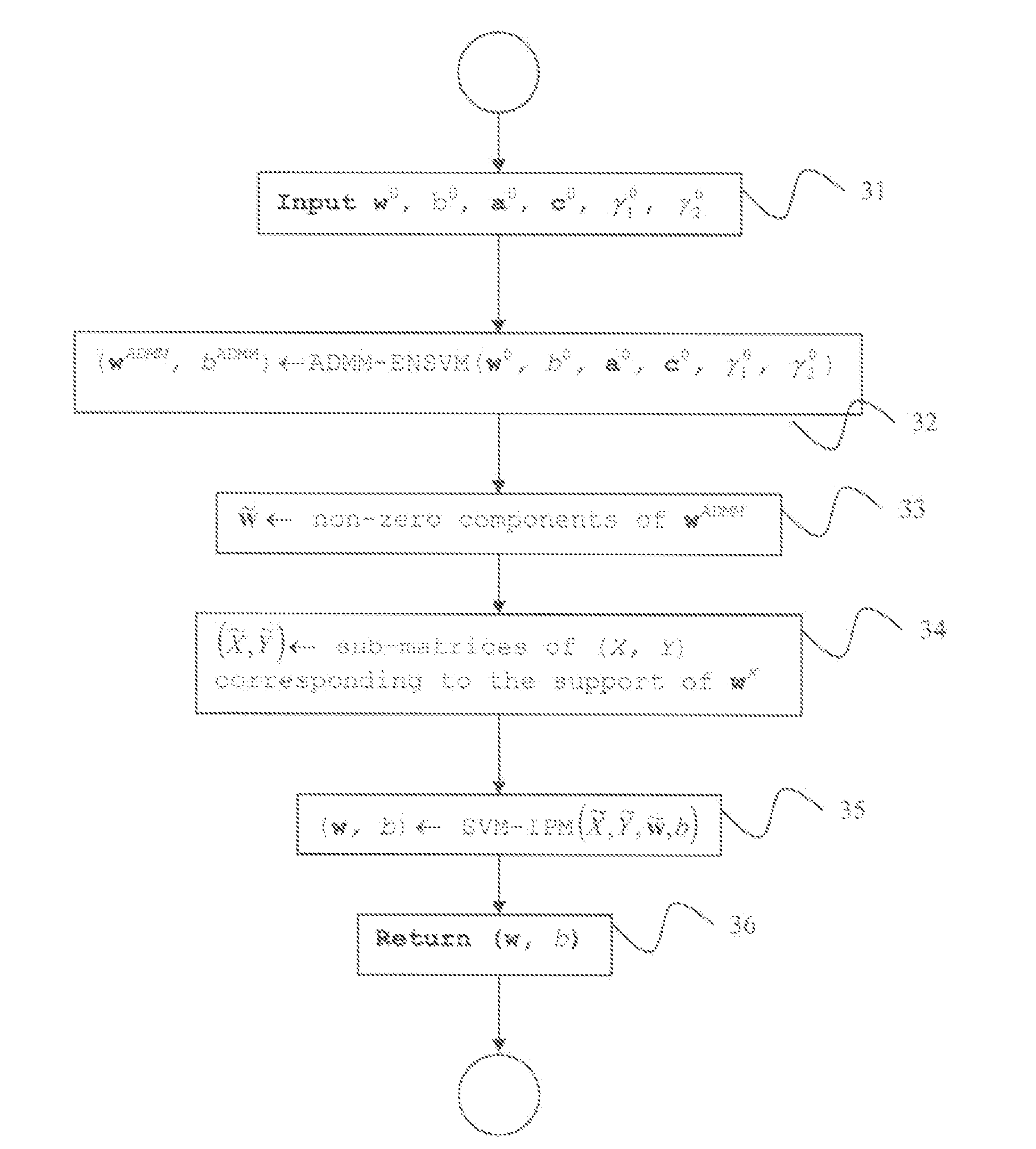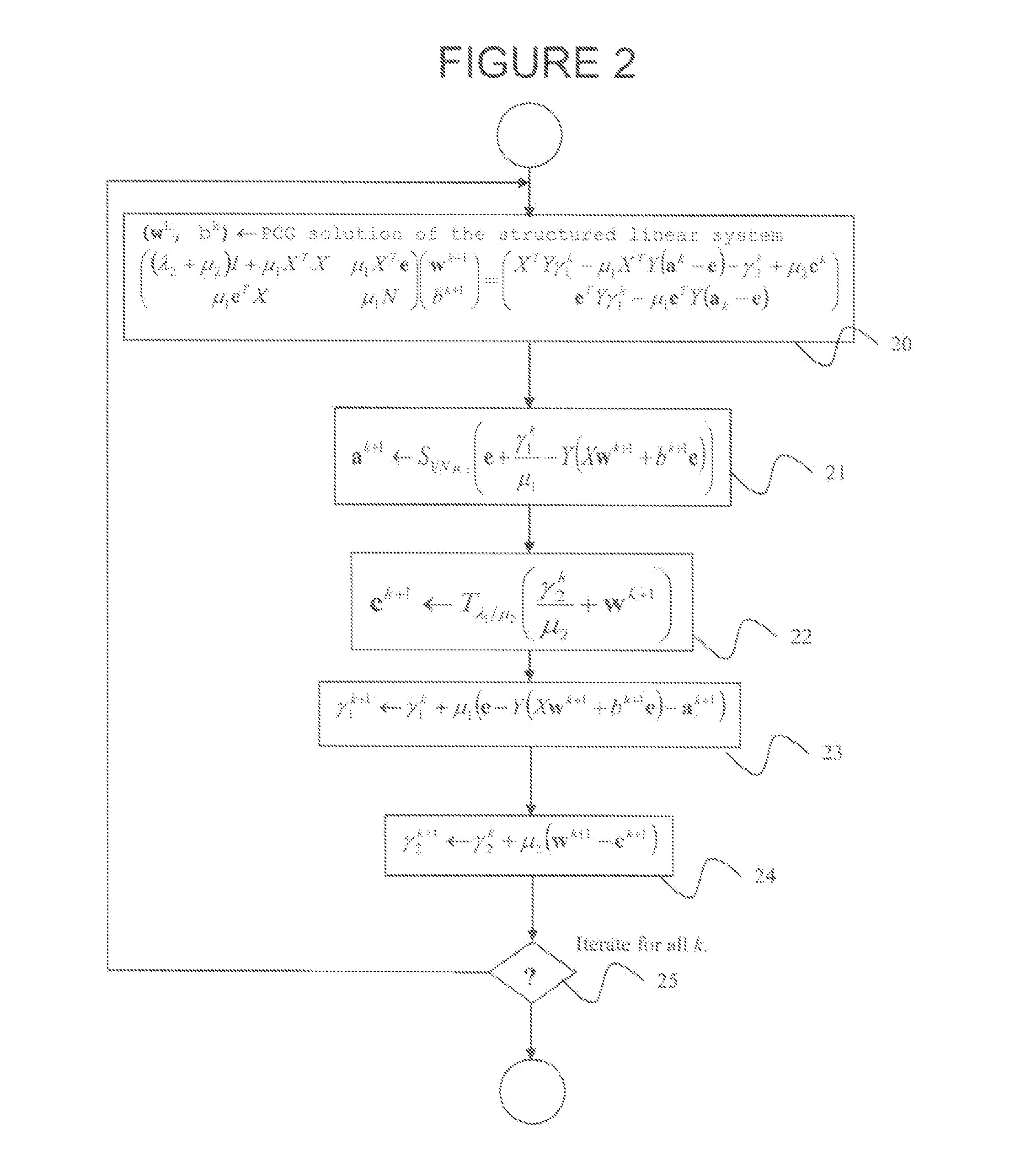Hybrid interior-point alternating directions algorithm for support vector machines and feature selection
a technology of support vector machines and alternating directions, applied in machine learning, kernel methods, instruments, etc., can solve the problems of small prediction accuracy loss, difficult incorporation of extra domain knowledge, and slow high accuracy of admm, and achieve high optimization accuracy
- Summary
- Abstract
- Description
- Claims
- Application Information
AI Technical Summary
Benefits of technology
Problems solved by technology
Method used
Image
Examples
Embodiment Construction
[0053]Exemplary embodiments of the invention as described herein generally include systems and methods for hybrid interior-point alternating directions for support vector machines and feature selection. Accordingly, while the invention is susceptible to various modifications and alternative forms, specific embodiments thereof are shown by way of example in the drawings and will herein be described in detail. It should be understood, however, that there is no intent to limit the invention to the particular forms disclosed, but on the contrary, the invention is to cover all modifications, equivalents, and alternatives falling within the spirit and scope of the invention.
[0054]Mathematical Notation: All matrices are expressed in uppercase Latin letters. Lowercase Latin letters in bold denote vectors, and those in plain typeface denote scalars. Greek letters can be either vectors or scalars depending on the context. The sample-label pairs are denoted by (xi, yi), i=1, . . . , N, where N...
PUM
 Login to View More
Login to View More Abstract
Description
Claims
Application Information
 Login to View More
Login to View More - R&D
- Intellectual Property
- Life Sciences
- Materials
- Tech Scout
- Unparalleled Data Quality
- Higher Quality Content
- 60% Fewer Hallucinations
Browse by: Latest US Patents, China's latest patents, Technical Efficacy Thesaurus, Application Domain, Technology Topic, Popular Technical Reports.
© 2025 PatSnap. All rights reserved.Legal|Privacy policy|Modern Slavery Act Transparency Statement|Sitemap|About US| Contact US: help@patsnap.com



